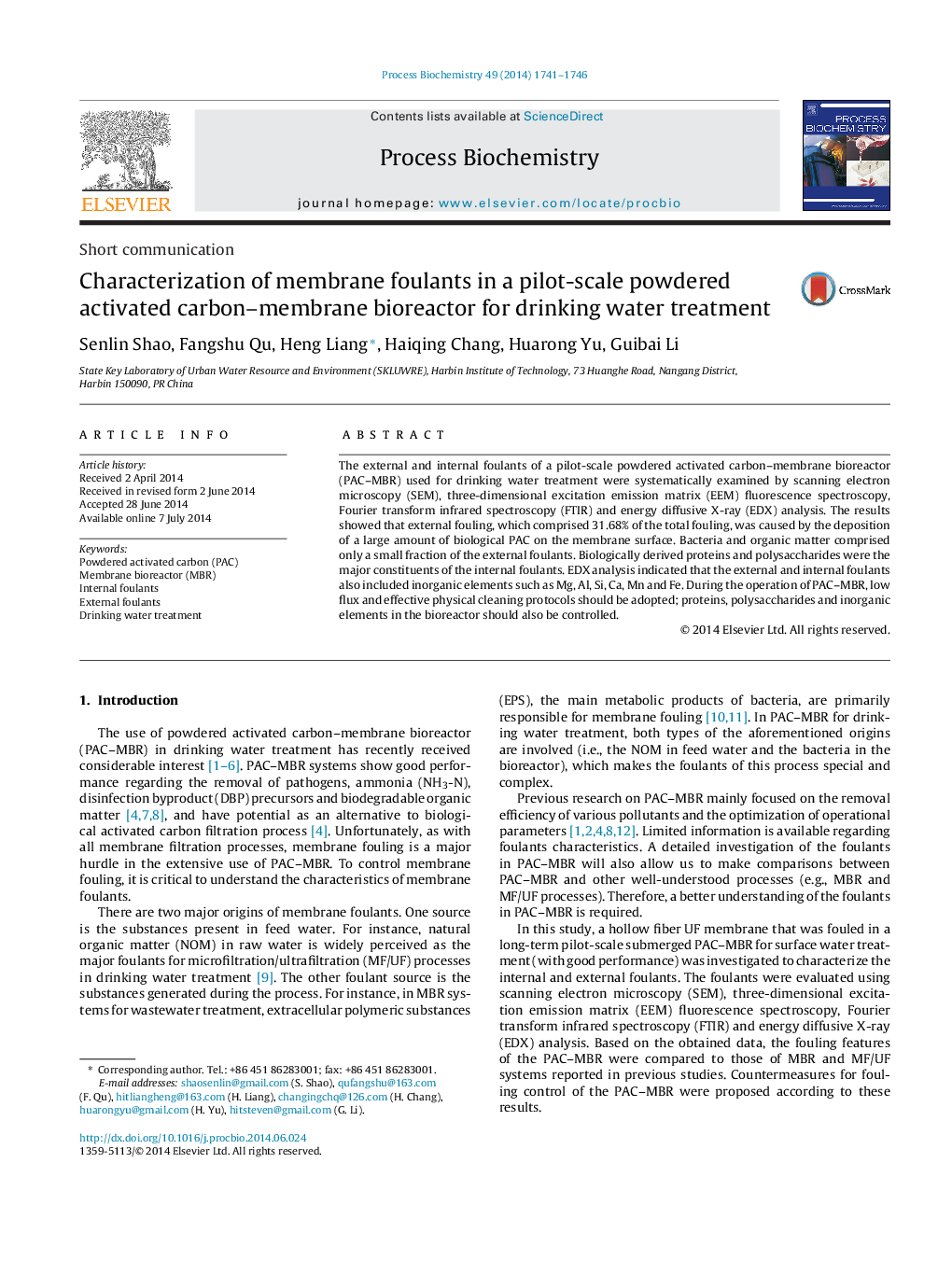| Article ID | Journal | Published Year | Pages | File Type |
|---|---|---|---|---|
| 34507 | Process Biochemistry | 2014 | 6 Pages |
•Membrane foulants of a pilot-scale PAC–MBR were systematically investigated.•Bacteria and organic matter only held a small portion of the external foulants.•Proteins and polysaccharides were major constituents of the internal foulants.•Na, Mg, Al, Si, Ca, Mn and Fe were the main inorganic elements of the foulants.
The external and internal foulants of a pilot-scale powdered activated carbon–membrane bioreactor (PAC–MBR) used for drinking water treatment were systematically examined by scanning electron microscopy (SEM), three-dimensional excitation emission matrix (EEM) fluorescence spectroscopy, Fourier transform infrared spectroscopy (FTIR) and energy diffusive X-ray (EDX) analysis. The results showed that external fouling, which comprised 31.68% of the total fouling, was caused by the deposition of a large amount of biological PAC on the membrane surface. Bacteria and organic matter comprised only a small fraction of the external foulants. Biologically derived proteins and polysaccharides were the major constituents of the internal foulants. EDX analysis indicated that the external and internal foulants also included inorganic elements such as Mg, Al, Si, Ca, Mn and Fe. During the operation of PAC–MBR, low flux and effective physical cleaning protocols should be adopted; proteins, polysaccharides and inorganic elements in the bioreactor should also be controlled.
